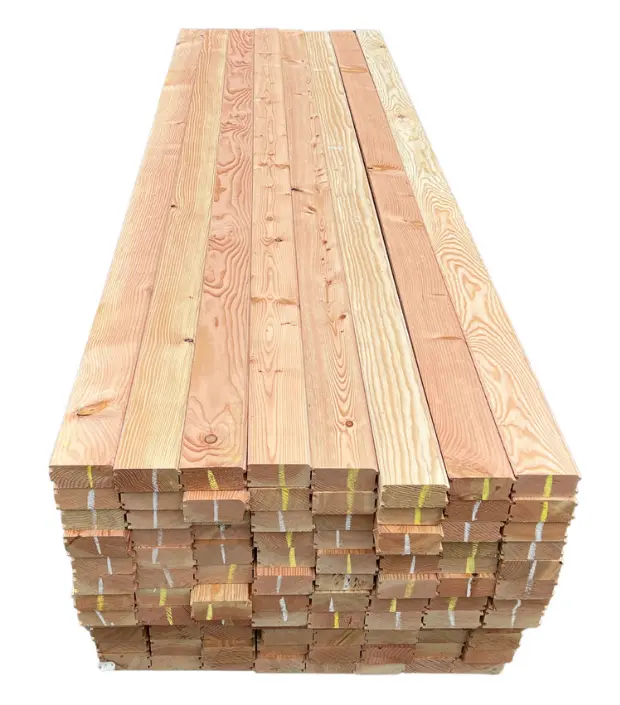When Old-Era Roof Decking Comes Back to Surface — We Know How to Replace It
At Pinnacle Roofing Professionals (#TeamPRP), we regularly encounter roof decks in the Seattle region built during the mid-20th century using heavy-duty tongue & groove lumber — most notably 3″ × 6″ or 4” x 6” (nominal) Douglas Fir boards, often in the profile known as “Select Dex” (double T&G with exposed V-groove) from suppliers such as Forest Products Supply.
Because these boards were common in larger multifamily, commercial or vaulted‐ceiling buildings of past decades, we bring specialized experience in their safe removal, replacement and sourcing of compatible lumber so the renovation or reroof keeps the integrity of the structure.
Why this lumber shows up in older Seattle roofs
- The “3×6 Select Dex” Douglas Fir roof decking is described by the manufacturer as a double tongue‐and‐groove board with a V-groove exposed face, premium Select Dex grade, kiln-dried and cut from slow-growth timber for enhanced dimensional stability.
- The specs show: 5¼″ exposed face, coverage ~230 lf per 100 sq ft, weight ~2.2 lb per board-foot or ~3.3 lb per lineal foot.
- Because of its strength and appearance, this profile was often used where higher span deck, exposed ceiling, or architectural expression was desired.
What this means when we replace it
For property owners or facility managers in the Seattle area whose buildings were built in this era and have this kind of decking, here’s what we bring to the table:
- Accurate identification: We inspect the roof deck to confirm if the existing boards are original 3×6 T&G Douglas Fir (or similar), check condition (decay, fastener pull-out, sag, moisture damage, solar‐mounting readiness).
- Sourcing compatible material: While the original boards might be several decades old, we maintain relationships with lumber suppliers who stock or can special-order 3×6 Select Dex profiles, kiln-dried Douglas Fir, random lengths (typically 8′–20′).
- Structural & performance upgrades: Because these boards may have been stressed by past loads, weathering or additions (e.g., older solar or mechanical loads), we assess replacement or reinforcement strategies (proper span, fastener schedule, updated code requirements).
- Integration with roofing & solar scopes: Since Pinnacle is both a roofing contractor and licensed electrical contractor for solar, we coordinate the decking replacement, roof system, and any future solar mount or load requirements under our umbrella warranty—reducing risk of “deck failure” under solar attachments or reroofing.
- Aesthetic continuity if visible: For buildings with exposed ceilings or architectural interior finish beneath the roof deck, using matching 3×6 Douglas Fir T&G retains the historic character and avoids costly finish remediation.
Critical considerations and best practice
- Before installation, let the boards acclimate on‐site: manufacturer recommends a minimum of three days, preferably a week, to stabilize moisture content. fp-supply.com+1
- Fastening schedule: For example, the manufacturer’s FAQ suggests for Select Dex: toenail one 40d nail at each support and face nail one 60d nail; also recommends horizontal spiking via pre-drilled holes every 8″.
- Span limitations: While 3×6 boards provide longer spans (up to ~12′-14′ simple span) compared to lighter decks, local design loads and code must be verified.
- Compatibility: If the original decking is in poor condition, simply replacing boards without checking framing/web or fasteners may leave hidden failure points; as a full‐service firm we handle the whole system.
- Integration for solar/roofing: Because we handle both roofing and electrical, when we replace decking we can embed or pre-plan for attachment plates, clearances, conduit runs, etc—saving cost and avoiding patchwork subcontracting.
Why this matters to you
If you manage a building with this type of legacy roof deck, the wrong approach (e.g., “load new solar on old deck”, “new roof on old boards with hidden rot”) can result in issues: sagging ceilings, fastener pop-ups, warranty disputes, or expensive remediation. With Pinnacle’s combined roofing‐and‐solar capability, we can:
- Provide a single point of responsibility for the deck, roof, solar interface so you don’t have to coordinate separate subs.
- Ensure material compatibility for the era of your building and any future retrofit plans.
- Update the system with modern load and code compliance, while preserving historic or architectural character if needed.
- Offer umbrella warranty coverage across roof + solar + deck scope (something few contractors offer).
Final word
If your building frames include older heavy‐duty tongue & groove decking (such as 3×6 Douglas Fir Select Dex) and you’re considering reroofing, adding solar, or performing major maintenance, you’ll benefit from working with a contractor who not only recognizes this material but also has direct experience replacing and sourcing it. At Pinnacle Roofing Professionals, we bring that experience to every project in the Seattle region. Reach out and let us evaluate your deck condition, review source options, and develop a plan that keeps your roof system—and any future solar—built on a solid and compatible foundation.


Queen Anne Solar, Energy Storage & Roof Project
Seattle, WA